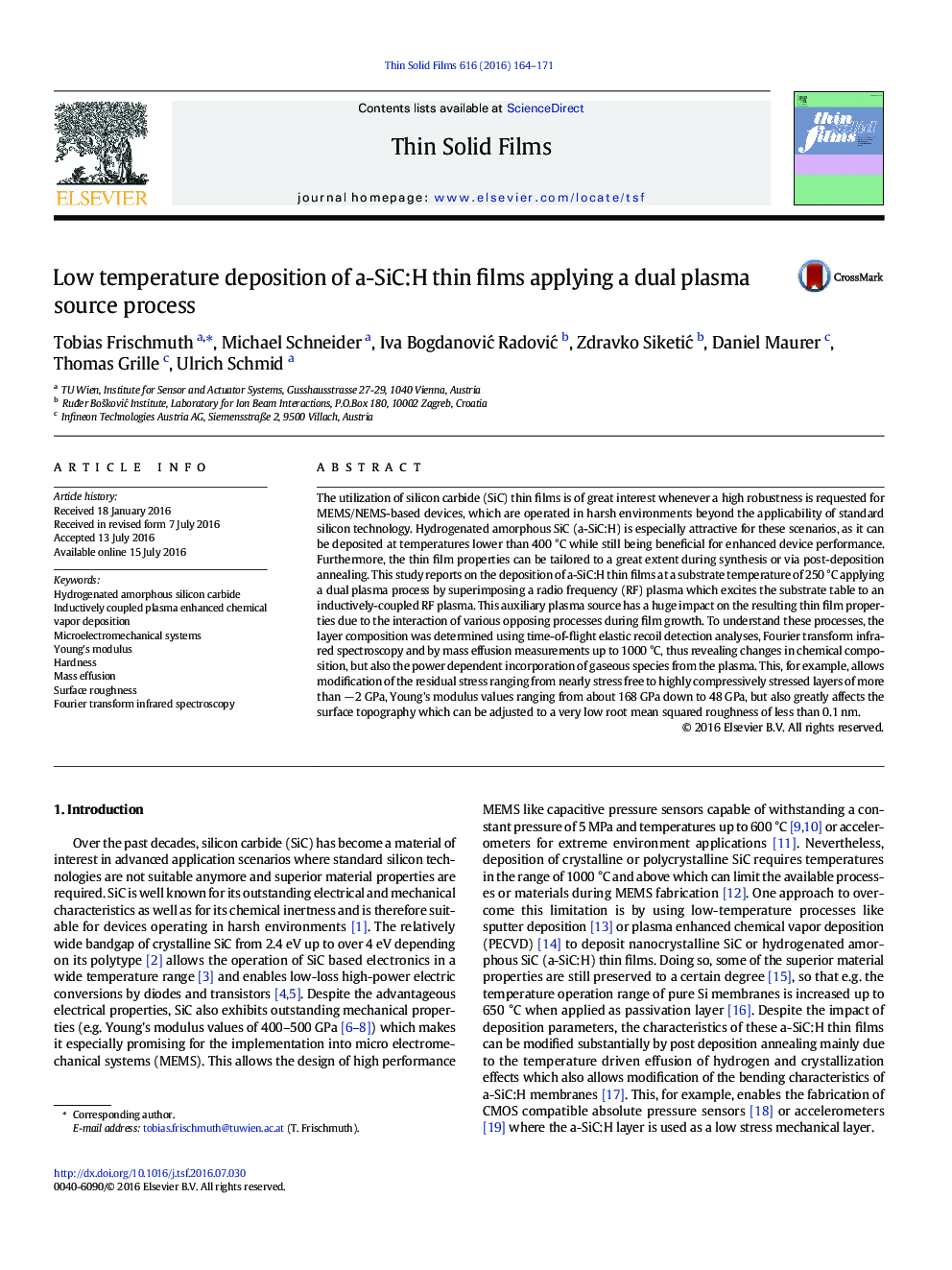| Article ID | Journal | Published Year | Pages | File Type |
|---|---|---|---|---|
| 1663730 | Thin Solid Films | 2016 | 8 Pages |
•a-SiC:H thin films are synthesized applying a dual-plasma process.•Plasma-power dependent incorporation of gaseous species is detected and analyzed.•Reduction of SiC bonds with secondary plasma power is revealed by FT-IR analyses.•Mechanical layer properties can be tailored to a great extent.•Layers with surface roughness values of even < 0.1 nm can be synthesized.
The utilization of silicon carbide (SiC) thin films is of great interest whenever a high robustness is requested for MEMS/NEMS-based devices, which are operated in harsh environments beyond the applicability of standard silicon technology. Hydrogenated amorphous SiC (a-SiC:H) is especially attractive for these scenarios, as it can be deposited at temperatures lower than 400 °C while still being beneficial for enhanced device performance. Furthermore, the thin film properties can be tailored to a great extent during synthesis or via post-deposition annealing. This study reports on the deposition of a-SiC:H thin films at a substrate temperature of 250 °C applying a dual plasma process by superimposing a radio frequency (RF) plasma which excites the substrate table to an inductively-coupled RF plasma. This auxiliary plasma source has a huge impact on the resulting thin film properties due to the interaction of various opposing processes during film growth. To understand these processes, the layer composition was determined using time-of-flight elastic recoil detection analyses, Fourier transform infrared spectroscopy and by mass effusion measurements up to 1000 °C, thus revealing changes in chemical composition, but also the power dependent incorporation of gaseous species from the plasma. This, for example, allows modification of the residual stress ranging from nearly stress free to highly compressively stressed layers of more than − 2 GPa, Young's modulus values ranging from about 168 GPa down to 48 GPa, but also greatly affects the surface topography which can be adjusted to a very low root mean squared roughness of less than 0.1 nm.
